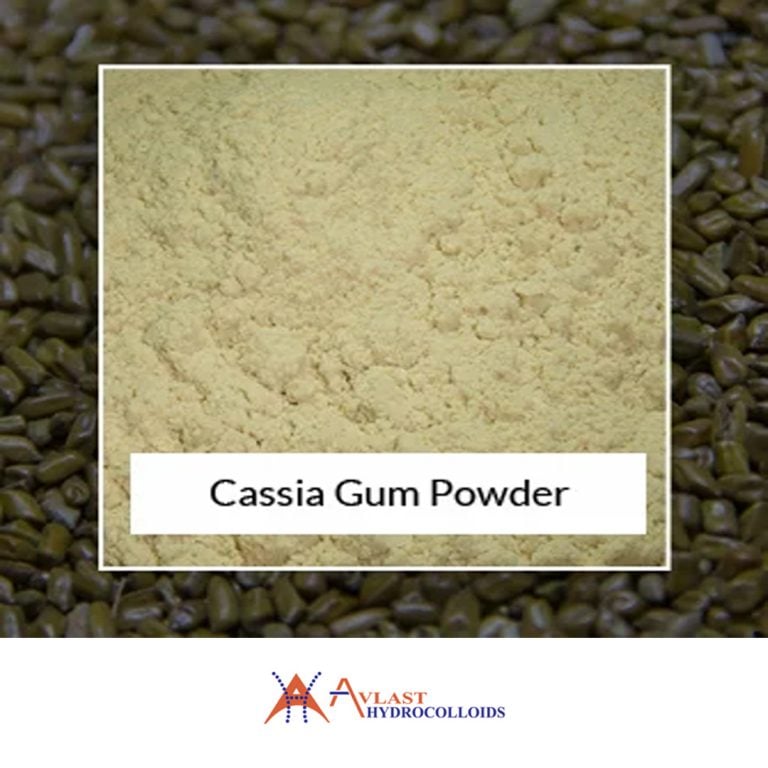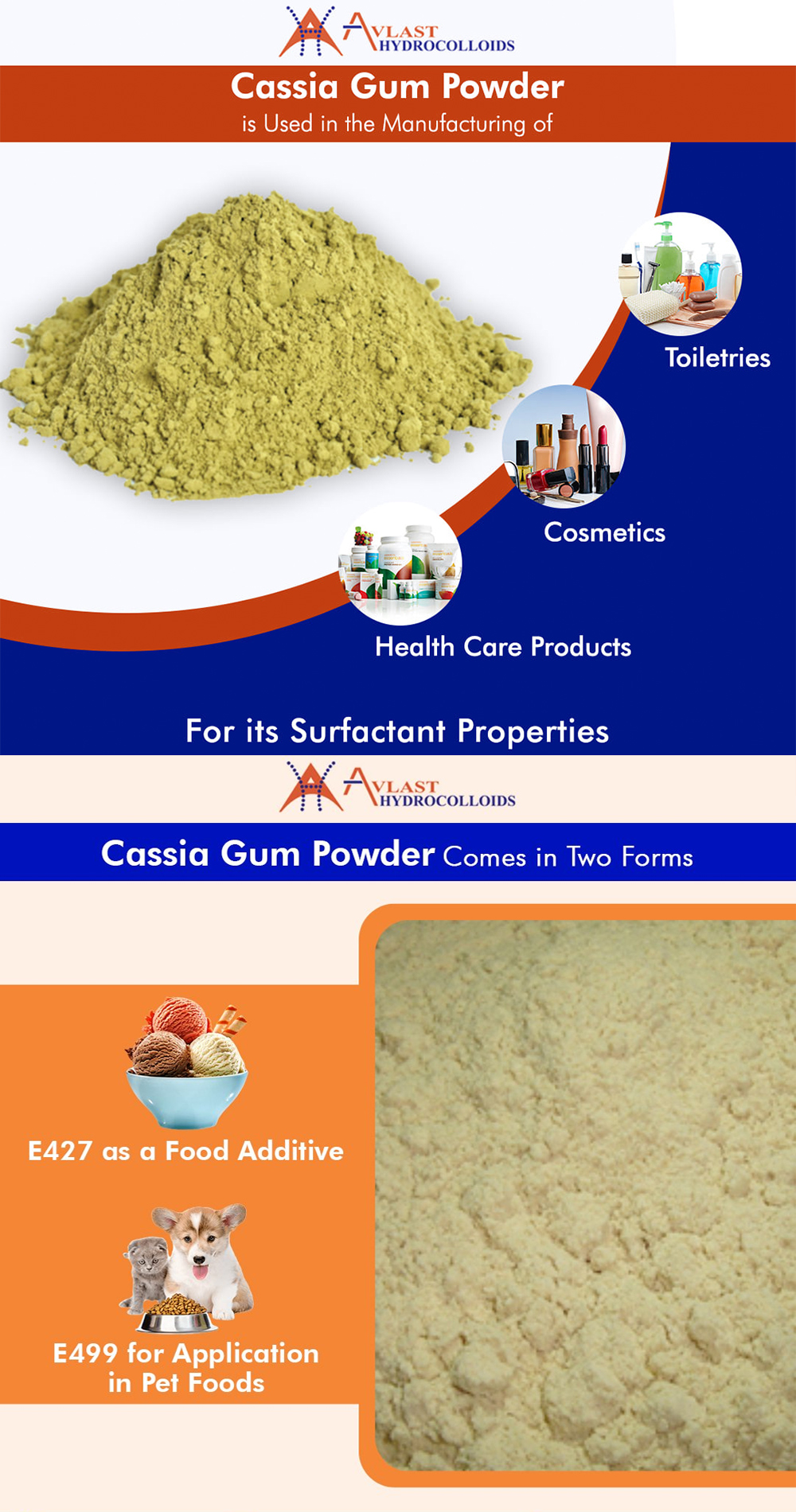Cassia Gum Powder – Applications & Benefits
Caesalpiniaceae is a wild plant from which Cassia Powder, a natural gel-forming material with industrial and culinary use, is derived. Cassia gum is employed as an emulsifying, thickening, water-holding, and stabilizing ingredient in frozen dessert treats and combinations, dairy, canned wet pet food, and other commodities.
Process of Obtaining Cassia Gum Powder
The processing of cassia gum starts with selecting the seeds. The first step is to separate the husk from the germ. Next, the splits are milled until they are uniform in particle size and are extracted using isopropyl alcohol. Grading machines remove impurities and filter the powder. Then, the final product is screened to make sure it is free of contaminants. Generally, this process takes three to six weeks.
After selection, the endosperm of the seeds is separated from the husk. During the process, it undergoes thermal and mechanical stress to remove the husk and germ. The endosperm is then manually cleaned and screened for impurities before it is milled. Once it has been separated, it is cleaned by hand. The next step is to add slurry and then a powdered form.

Different Applications & Advantages of Cassia Gum Powder
Despite its similarity to gums, Cassia Gum is more preferred for food applications. It contains a large percentage of polysaccharides by weight and is soluble in hot water. When combined with Xanthan Gum or Kappa Carrageenan, it forms superior gels. This allows for partial replacement of more expensive Carrageenan or Xanthan while offering better texture. This makes it an ideal substitute for Locust Bean gum.
Cassia Gum has many applications and is considered a safe thickener. It is used in a variety of products such as soaps and creams and has been approved by the United States Department of Agriculture as a GRAS thickening agent. It is also a natural emulsifier. It is a highly versatile ingredient in food and beverage production, allowing it to be used in a wide range of different applications.
Cassia gum is an ingredient that has many uses. Its primary purpose is as a thickening agent in food. It is also used in emulsification, moisture retention, and texturing. Its chemical composition is similar to other natural gums and is approved for use in Europe and Japan. In addition, there are no known harmful effects of this food additive. If you have a food application, cassia gum can improve the texture, taste, and appearance.
The main purpose of cassia gum is to improve the texture and shape of food. It is also used in dairy products to prevent Syneresis (the formation of cheese). It increases viscosity, promoting a smooth mouth feel. Its high acid-resistance makes it an excellent ingredient in pickles. The most common type of cassia gum is derived from the seeds of the plant, which is a non-GMO material.
In Conclusion
Cassia gum is a naturally occurring polysaccharide that is 5:1 mannose to galactose. Its high mannose to galactose ratio hinders the gelling effect of anionic polymers. Its low galactose content makes it more efficient for gelling in products requiring a high level of gelling. If you’re looking for a gelling agent for your pet, you may be able to use cassia gum.


